It's time for your second helping of the 2018 future power rankings. Don't worry, hungry college football fans, there are still two more sets of power rankings (defense, overall) to go.
After examining teams with the best quarterback outlook for the next three seasons, it's time to look at the entire offensive unit. A team's quarterback forecast obviously plays a big role, so expect to see many of the same teams in these rankings. But some programs have excelled more with running back recruiting or line development, so those factors are considered, too.
This is a personnel-based ranking, so I try to limit the influence of coaching, but time-tested offensive coaches are taken into account in some cases.
As a reminder, this projection covers the 2018, 2019 and 2020 seasons. Here's a look at the 25 teams with the best outlook on offense:
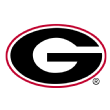
2018 future QB ranking: 1
2017 future offense ranking: 13
Scouting the Bulldogs: Is Kirby Smart, a career defensive coach, building an offensive juggernaut in Athens? It sure seems that way. The quarterback position is secure with Jake Fromm's emergence as a freshman in 2017, along with the signing of Justin Fields, ESPN's top-ranked recruit in the 2018 class. Although Georgia loses standout running backs Nick Chubb and Sony Michel, D'Andre Swift (618 rush yards, 7.6 yards per carry) is entering his sophomore year. The Bulldogs also signed Zamir White, ESPN's top-ranked running back and No. 15 overall player in the 2018 class, and James Cook.
"That next back is going to be a dude," a defensive coordinator who faced Georgia last year said of Swift. "He hurt us more than the other two. I don't think that's going to fall off very much, and then they have Zamir White coming in."
Wideout Terry Godwin is back for one more year and tight end Isaac Nauta could play two more seasons. Georgia has made some of its biggest gains on the line, a potential weakness entering last season. Tackle Andrew Thomas is only a sophomore -- "He jumped off the tape like he's going to be unbelievable," an SEC defensive coordinator said -- and Georgia has loaded up on ESPN 300 linemen in the past two classes, including 2017 five-star tackle Isaiah Wilson and the top two guards in the 2018 class, Trey Hill and Jamaree Salyer.

2018 future QB ranking: 2
2017 future offense ranking: 4
Scouting the Tigers: Dabo Swinney continues to churn out productive offenses and find elite skill-position talent on the recruiting trail. Clemson is in great shape at quarterback with Kelly Bryant back for 2018 and top recruits Hunter Johnson and Trevor Lawrence in place to cover the position through 2020. Running back Travis Etienne has three seasons of eligibility left after averaging 7.2 yards per carry in 2017, and returning starter Tavien Feaster is just a junior.
"I was really impressed with the Etienne kid," an ACC defensive coordinator said. "He functioned effectively inside against most [teams], and he has top-end speed."
Wide receiver should remain a position of strength for Clemson, although there are some short-term concerns as to who complements Hunter Renfrow. Coaches think sophomore Tee Higgins, who averaged 20.3 yards per reception in 2017, will be a breakout player this fall. Clemson also signed Justyn Ross, ESPN's No. 11 receiver in the 2018 class. The offensive line is the only true question mark here after it struggled against Alabama in the Allstate Sugar Bowl. Left tackle Mitch Hyatt returns for his fourth year as the starter this fall.

2018 future QB ranking: 8
2017 future offense ranking: 7
Scouting the Sooners: OU should continue to put up points and yards in bunches under offensive guru Lincoln Riley. Although the quarterback position could take a step back with Baker Mayfield's departure, the Sooners are set up well with Kyler Murray for possibly the next two seasons, along with some talented recruits.
"He's got some freakish type skills," a Big 12 coach said of Murray. "He can run so well, he's so explosive, so fast, but this dude can sling the hell out of it, too."
Running back should be the strength of the unit as Rodney Anderson and Trey Sermon both have multiple years of eligibility left. "He's a talented guy and they've got some depth there," a Power 5 head coach said of Anderson. "[Running backs coach] Cale [Gundy] recruits running backs as well as anybody in the country. That guy doesn't get enough credit."
OU loses Mackey Award winner Mark Andrews at tight end, but top wideouts Marquise Brown and CeeDee Lamb are back with multiple seasons of eligibility left. A historically strong offensive line loses All-America tackle Orlando Brown and solid center Erick Wren, but the other three starters return for Bill Bedenbaugh, one of the nation's top line coaches.
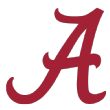
2018 future QB ranking: 3
2017 future offense ranking: 1
Scouting the Crimson Tide: Don't be alarmed by the mini-drop for the Tide despite winning the national title game with a freshman quarterback (Tua Tagovailoa) and several other young players on the field. "Every true freshman they put on the field made big plays for them," a Power 5 head coach said.
Alabama endures some key losses, however, including do-it-all wide receiver Calvin Ridley, who had 46 more receptions than any other Tide player in 2017. The Tide also lose running back Bo Scarbrough and center Bradley Bozeman.
Still, the outlook for the line and the run game look very good. Left tackle Jonah Williams leads a line with four returning starters, while running back Damien Harris enters his final season alongside junior Josh Jacobs and dynamic sophomore Najee Harris. Tagovailoa and returning starter Jalen Hurts both have multiple seasons of eligibility left, and if young wideouts such as Jerry Jeudy and DeVonta Smith blossom, the passing game should be in good shape going forward.
Alabama's recruiting for offense has been strong, particularly with linemen, but the team is looking for more consistent playmakers to surround Tagovailoa and Hurts. Coaches also wonder whether the shuffling on Nick Saban's offensive staff will hurt Alabama.
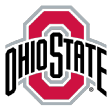
2018 future QB ranking: 7
2017 future offense ranking: 5
Scouting the Buckeyes: Few teams can lose a record-setting, four-year starting quarterback like J.T. Barrett and potentially have a brighter outlook on offense, but Ohio State might. It must replace Barrett at quarterback but has three good nonsenior options -- Dwayne Haskins, Joe Burrow and Tate Martell -- and plenty of experience elsewhere. "It's an embarrassment of riches," a Big Ten head coach said.
Top running backs J.K. Dobbins and Mike Weber return, and Dobbins will be there at least two more years after rushing for 1,403 yards on 7.2 yards per carry as a true freshman. Ohio State also brings back its entire receiving corps, a group that needs a consistent star or two to emerge but boasts plenty of experience. Parris Campbell, Terry McLaurin and Binjimen Victor are among those who could have big 2018 seasons, and Ohio State continues to recruit well at the position.
The offensive line should be among the nation's best for the next three seasons, as 10 letter winners return in 2018, including senior tackle Isaiah Prince and junior guard Michael Jordan. In February, Ohio State signed possibly its left tackle of the future, Nicholas Petit-Frere, ESPN's top-rated tackle and No. 13 overall recruit in the 2018 class. Asked to identify the Big Ten's most talented offense, a head coach in the league said, "Ohio State would be No. 1 by quite a bit."
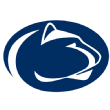
2018 future QB ranking: 5
2017 future offense ranking: 7
Scouting the Nittany Lions: Life without transformative running back Saquon Barkley and guru coordinator Joe Moorhead begins, but there's too much talent in State College to expect much of a drop-off. Quarterback Trace McSorley is one of few no-doubt, proven senior starters at a brand-name program entering the 2018 season. Known mostly for throwing 50-50 balls in 2016, McSorley improved his completion percentage by nearly nine points last season. Penn State has recruited well to cover itself at QB through 2020.
Miles Sanders gets his chance at running back, and even if he doesn't match his recruiting hype, Penn State just signed Ricky Slade, ESPN's No. 2 running back and No. 17 overall player in the 2018 class. The coaches also liked what speedster Journey Brown did during his redshirt season, and he has three years of eligibility remaining. Wide receiver should continue to be a strength, as Juwan Johnson and DeAndre Thompkins step into the spotlight. While losing tight end Mike Gesicki hurts in the short term, Penn State just signed two ESPN 300 prospects, Zack Kuntz and Patrick Freiermuth.
"Their overall skill has been upgraded significantly," a Big Ten coach said. "Outside of Saquon, their best skill was all young."
The questions along the line are why Penn State isn't even higher, but four starters return from 2017 and Chasz Wright is the lone senior in the group. Penn State has signed five ESPN 300 linemen since 2017.
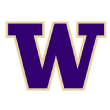
2018 future QB ranking: 4
2017 future offense ranking: 8
Scouting the Huskies: It's rare when any Pac-12 team other than USC has the league's brightest outlook on offense. The Trojans remain a formidable crew, but Washington is building something special under Chris Petersen. The quarterback position is secure for 2018 with Jake Browning, and should be for 2019 and 2020 with Georgia transfer Jacob Eason, alongside top incoming recruits Jacob Sirmon and Colson Yankoff.
Record-setting running back Myles Gaskin returns for one final season, and Washington should be set up well behind him with Salvon Ahmed, who is just a sophomore and averaged 6.4 yards per carry in limited work last season. Like Alabama, Washington has depth questions at wide receiver after losing a productive player, Dante Pettis. But as it is at Alabama, offensive line should be a strength for the foreseeable future. Left tackle Trey Adams, projected as a first-round draft pick before his midseason knee injury in 2017, is back to lead the group this fall.
"Washington and Stanford had [the] two best lines that we played," a Pac-12 defensive coordinator said. "Washington is freaking huge."
8. USC Trojans
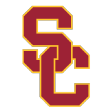
2018 future QB ranking: 23
2017 future offense ranking: 2
Scouting the Trojans: USC has enough talent to produce potent offenses through 2020, but there are obvious concerns, beginning at quarterback. The Trojans will turn to an unproven player this fall and possibly one who should still be in high school (J.T. Daniels). This could be more of a run-reliant offense in 2018, as Stephen Carr likely steps into a featured role with three years of eligibility left. Opposing coaches also think Vavae Malepeai can contribute more after averaging 5.3 yards per carry in 2017.
Wide receiver will be an immediate strength and likely a long-term one as Tyler Vaughns and Michael Pittman Jr. both return with multiple years of eligibility left. "The young wideouts at USC are good players," an opposing defensive coordinator said. "The one young kid [Vaughns] was just coming on."
USC also signed standouts Devon Williams (ESPN's top-ranked athlete) and Amon-Ra St. Brown (ESPN's No. 3 receiver) in the 2018 class. The Trojans are also loaded at tight end for the next few years with senior Tyler Petite, junior Daniel Imatorbhebhe and sophomore Josh Falo. But the unit's future hinges on improving an offensive line that one Pac-12 defensive coordinator called "alarmingly suspect" in 2017. The Trojans bring back four starters there this season.
"Some continuity, some health would help them get better," an opposing defensive coordinator said.

2018 future QB ranking: 6
2017 future offense ranking: 11
Scouting the Cardinal: When colleague Jake Trotter put together a story on college football's top triplets, we talked about how Stanford was among few teams that returned a clear No. 1 quarterback, running back and wide receiver. The quarterback position looks stable for the next three years, thanks to K.J. Costello's emergence and Stanford's strong recruiting behind him (two top-100 players in the 2018 class). The Cardinal get Bryce Love, arguably the Heisman Trophy front-runner, back for another season, but they must find answers at running back for 2019 and 2020. Stanford's short-term outlook at receiver is also promising with J.J. Arcega-Whiteside and Trenton Irwin, and the Cardinal signed three ESPN 300 receivers in the last two classes, along with Colby Parkinson, ESPN's No. 2 tight end and No. 47 overall player in the 2017 class.
"They're so long it creates bad matchups," a Pac-12 defensive coordinator said. "Arcega-Whiteside, he's really good, especially in the red zone he's a real tough matchup. And on third down, he just bodies guys."
Other than quarterback, Stanford's line is the big reason for long-term optimism. This year's group features solid veterans such as Jesse Burkett and Nate Herbig, and Stanford landed two of the nation's top tackle recruits in 2017 (Foster Sarell and Walker Little).
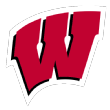
2018 future QB ranking: 17
2017 future offense ranking: Not ranked
Scouting the Badgers: This might surprise some people because Wisconsin's defense has been its best unit in recent years, but Paul Chryst's offense is set up for big things. Running back Jonathan Taylor will play at least two more years in college after a record-setting freshman season. "As good as he was, you could tell he has a chance to be really special," said a defensive coordinator who faced Wisconsin in 2017. "As long as he's going to be there, he's got a chance to break a lot of records."
Wisconsin returns all five starters on the line, including NFL prospects such as David Edwards, Beau Benzschawel and Michael Deiter. After a few OK years, it should soon be Wisconsin's signature position group again. Quarterback Alex Hornibrook has irritated fans with interceptions and has impressed opposing coaches with his third-down efficiency and ability to fit passes into tight windows. Plus, he has two years of eligibility left.
Arguably the biggest reason for Wisconsin's placement is a receiving corps filled with speed and explosiveness, not to mention players like Danny Davis III with multiple years of eligibility left. "Fastest group of Wisconsin receivers I've seen in my time here," a Big Ten coach said. "They're much more athletic than they've ever been."

2018 future QB ranking: 12
2017 future offense ranking: Not ranked
Scouting the Spartans: A turnaround season in 2017 has put Michigan State back on the Big Ten and national radar for 2018, and the offense is a big reason why. Ten starters return from a unit that improved down the stretch last season, including several stars -- quarterback Brian Lewerke among them -- with multiple years of eligibility left. Lewerke provides a strong arm and mobility MSU typically doesn't have at quarterback. He'll also be throwing to the same receiver group, led by Felton Davis III and Darrell Stewart Jr., that one Big Ten coach called the league's best wideout corps.
"All the wideouts were young," said a defensive coordinator who faced the Spartans last season. "They looked athletic. They weren't polished route runners yet, but they could run."
Running back LJ Scott has had a solid career (2,591 yards, 24 touchdowns) and returns for his final season, but there are some questions about 2019 and 2020. Of the four returning offensive line starters, three have multiple years of eligibility left, and MSU returns seven total letter winners at the position.
12. Auburn Tigers
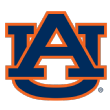
2018 future QB ranking: 10
2017 future offense ranking: 16
Scouting the Tigers: The key here is continued development within the offensive line, which took a major step forward last season but also loses four starters and coach Herb Hand. This spring, veteran assistant J.B. Grimes is working with several players -- Marquel Harrell, Mike Horton, Caleb King, Calvin Ashley -- who have multiple years of eligibility remaining. Getting the line right immediately would be huge, as quarterback Jarrett Stidham gives the unit a veteran leader for likely one more year.
The Tigers lose the SEC's top rusher, Kerryon Johnson, and need Kam Martin and other backs to emerge. Martin averaged 6.1 yards per carry in limited work in 2017 and has two years of eligibility left. Gus Malzahn's teams always run the ball effectively, but Auburn should be leaning more on its receiving corps, at least for 2018 and possibly beyond. Ryan Davis had a team-record 84 catches in 2017 and returns for his final season, and big-play threats Darius Slayton and Will Hastings are also back. Auburn is looking for the same from Nate Craig-Myers, who has two years of eligibility remaining, and the team signed three ESPN 300 receivers in the 2018 class.
13. Arizona Wildcats
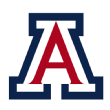
2018 future QB ranking: 9
2017 future offense ranking: Not ranked
Scouting the Wildcats: Khalil Tate's emergence at quarterback midway through last season transformed the outlook for Arizona's offense. Tate has two years of eligibility left and appears to be an excellent fit for the offense run by coach Kevin Sumlin and coordinator Noel Mazzone. But Tate isn't the only reason Arizona appears here. Sophomore J.J. Taylor averaged 5.8 yards per rush as the secondary ball carrier next to Tate.
"They had pretty good backs," a Pac-12 defensive coordinator said. "That J.J. Taylor, he's not very big but he can roll."
Although another Pac-12 coach described Arizona's wide receivers as "average at best," Sumlin has a strong track record of recruiting and developing wideouts and has some solid seniors in Tony Ellison, Shun Brown and Shawn Poindexter. The big question is the line, an area where previous coach Rich Rodriguez struggled to build depth. Arizona got a big short-term boost when the NCAA granted left tackle Layth Friekh a fifth year of eligibility.
14. UCF Knights
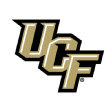
2018 future QB ranking: 10
2017 future offense ranking: Not ranked
Scouting the Knights: New coach Josh Heupel inherits a talented group that should continue to flourish in his system. Junior quarterback McKenzie Milton is coming off an incredible 2017 season -- 4,037 pass yards, 613 rush yards, 45 total touchdowns. Even if there are some initial struggles with a new offense, Milton is too talented not to produce for two more years. An AAC defensive coordinator said that while Milton doesn't have the arm of Heupel's last quarterback, Missouri's Drew Lock, he does everything well.
The coach also had high praise for Knights running back Adrian Killins Jr., who has two years of eligibility left after averaging 6.9 yards per carry with 10 touchdowns in 2017. Other offensive threats such as wideouts Dredrick Snelson, Otis Anderson and Gabriel Davis all have multiple years of eligibility remaining. The offensive line loses some key players but also brings back multiyear starters, among them tackle Wyatt Miller and center Jordan Johnson. With only two returning seniors, UCF is set up to produce strong lines for the next few seasons.
15. TCU Horned Frogs
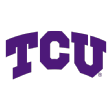
2018 future QB ranking: 22
2017 future offense ranking: 21
Scouting the Horned Frogs: A Gary Patterson-coached team always will be known for defense, even in a league like the Big 12, but TCU's outlook on offense looks very promising. The Frogs have some immediate questions at quarterback, where Shawn Robinson is trying to hold off Penn transfer Michael Collins and heralded incoming freshman Justin Rogers. But TCU has enough young talent there.
Patterson boasts one of the most dynamic wide receiving corps of his tenure, led by Jalen Reagor, who averaged 17.5 yards per catch with eight touchdowns last fall. "A tremendous individual player," a Big 12 coach said of Reagor. Incoming freshman Taye Barber adds explosiveness, and veteran KaVontae Turpin is back for his final season. Kyle Hicks will be missed at running back, but Darius Anderson, who has two years of eligibility left, filled in well last fall with 768 yards and eight touchdowns.
The line has some short-term concerns after losing four starters, but TCU signed Anthony McKinney, ESPN's top-rated junior college tackle in 2018. "They're bigger than they've ever been, and they're well-coached," a Big 12 coach said. "They're strong. They've recruited really, really well. They used to not be one of the bigger O-lines in the country."
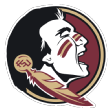
2018 future QB ranking: 15
2017 future offense ranking: 3
Scouting the Seminoles: This will be one of the more interesting situations to watch as the Willie Taggart era begins. If quarterback Deondre Francois clicks in Taggart's offense, Florida State should be in good shape through at least 2018 and possibly 2019. But creating quarterback depth is a short-term concern. The Seminoles will have one of the nation's best running back tandems in senior Jacques Patrick and sophomore Cam Akers, who both averaged more than 5 yards per carry with seven touchdowns each in 2017.
"Those guys as a pair, I don't know if anybody in our league has anybody better than them," an ACC defensive coordinator said.
How much space the running backs have depends on whether FSU can upgrade an offensive line that backslid in recent years. Mainstays Alec Eberle and Cole Minshew are back. An arguably bigger short-term concern is wide receiver, as the Seminoles' top returnee, Keith Gavin, had 27 catches last year. "I wasn't impressed," an ACC coach said. "I don't know how much of it was scheme, how much of it was [Francois' injury]."
FSU signed two ESPN 300 wideouts in the 2018 class, and sophomore D.J. Matthews should have a bigger role. "They couldn't fit him in last year," an ACC defensive coordinator said. "I wouldn't be surprised if he's mentioned as a guy to keep an eye on."
17. Miami Hurricanes
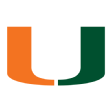
2018 future QB ranking: 18
2017 future offense ranking: 19
Scouting the Hurricanes: Miami's struggles down the stretch in 2017 indicated the team was still a year or two away, but a big breakthrough could be coming. Mark Richt and his staff have upgraded recruiting at all offensive positions. The Hurricanes must figure out their quarterback situation, although N'Kosi Perry should be the long-term answer. Miami returns running back Travis Homer, who gained valuable experience late last season, and also signed Lorenzo Lingard, ESPN's No. 4 running back and No. 60 overall player in the 2018 class.
Receiver will be a strength, as Ahmmon Richards leads a group also featuring speedsters Jeff Thomas and Mike Harley. "He's such a game-changer," an ACC defensive coordinator said of Richards. "If he's not the best in the league, he has a chance to be right up there." Another ACC defensive coordinator said Thomas "can fly" and that Miami's overall skill will challenge defenses for years to come.
Coaches said the Hurricanes' line was solid but not spectacular. Sophomore Navaughn Donaldson is a bright spot, and Miami has signed four ESPN 300 linemen since 2017.
18. West Virginia Mountaineers

2018 future QB ranking: 16
2017 future offense ranking: Not ranked
Scouting the Mountaineers: The short-term outlook is promising, as senior quarterback Will Grier leads an offense that should be one of the nation's best as WVU aims for its first Big 12 title. If coach Dana Holgorsen's history holds, WVU will be formidable on offense for the next three years. Grier will throw to a proven receiving corps led by seniors David Sills V (18 touchdown receptions in 2017) and Gary Jennings (97 receptions for 1,096 yards), along with junior Marcus Simms (663 receiving yards, 18.9 YPC in 2017). Alabama transfer T.J. Simmons joins the mix this season and has three years of eligibility left, and the Mountaineers also add Miami tight end transfer Jovani Haskins.
"[Simms] was one of the fastest guys I've seen," a Big 12 coach said. "They've got guys on the outside and they've recruited well behind them."
Another Big 12 coach added of the 2018 WVU offense, "They've probably got the most pieces [coming back] in the league."
West Virginia must address the running back position after losing Justin Crawford, as juniors Kennedy McKoy and Martell Pettaway are the most experienced options. Four starting linemen return, led by veteran tackles Yodny Cajuste and Colton McKivitz, but depth has been an issue for this program and must continue to be built.
19. Oregon Ducks

2018 future QB ranking: 13
2017 future offense ranking: 14
Scouting the Ducks: Oregon is aiming for continuity on offense despite losing Taggart after just one year. The hope is that with quarterback Justin Herbert and much of Taggart's staff still in Eugene -- including new leading man Mario Cristobal -- the Ducks can continue to score points. If Herbert stays for two more years, Oregon could be in great shape offensively, but the junior is a legitimate NFL prospect.
The offensive line should continue to develop under Cristobal, as Oregon returns a host of players with multiple years of eligibility remaining, including center Jake Hanson and tackle Brady Aiello. Running back is a big unknown after Royce Freeman's departure, as senior Tony Brooks-James (5.4 yards per carry) competes with ESPN 300 recruit Jamal Elliott and others. Leading receiver Dillon Mitchell has two years of eligibility left and shows good chemistry with Herbert, and junior tight end Jacob Breeland has star potential after averaging 17.8 yards per reception with a team-high five touchdown catches in 2017.
"They're explosive, they're fast, they're one of the top groups in the league," a Pac-12 defensive coordinator said. "They use a lot of groups, they can do the fly-sweep stuff. We've got to see who replaces Freeman, but that quarterback is good."
20. Mississippi State Bulldogs
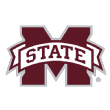
2018 future QB ranking: 14
2017 future offense ranking: Not ranked
Scouting the Bulldogs: After losing Dan Mullen to Florida, Mississippi State sought another offensive-minded coach who could continue the unit's success. Moorhead has a good chance to keep it going in 2018 and most likely beyond. He inherits a great situation right away: an all-senior backfield of QB Nick Fitzgerald and RB Aeris Williams, who combined for 2,091 rushing yards and 20 touchdowns last season. Although both positions will need new starters in 2019, Keytaon Thompson has shown potential in limited work at quarterback, while running back Kylin Hill averaged 5 yards per carry as a freshman last fall.
Four of five starters return on the offensive line, although All-SEC left tackle Martinas Rankin will be missed. Mississippi State signed ESPN 300 offensive tackle Kwatrivous Johnson in February but must keep building depth. Wide receiver is the team's most pressing concern, as no player had more than 27 catches in 2017. Touchdown receptions leader Deddrick Thomas heads a group of solid junior wideouts, and Mississippi State is bringing in Stephen Guidry, ESPN's top junior college receiver and No. 3 JC prospect, along with ESPN 300 wideouts Malik Heath and Devonta Jason.
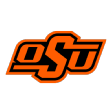
2018 future QB ranking: Not ranked
2017 future offense ranking: 10
Scouting the Cowboys: This is a unique unit to analyze, at least in the short term. The optimist would say coach Mike Gundy always produces strong offenses, and has enough talent to keep it going. The pessimist would look at the loss of record-setting players such as quarterback Mason Rudolph and wide receiver James Washington and cast doubt.
There are short-term quarterback concerns unless Hawaii graduate transfer Dru Brown or an unproven player blossoms this fall. The long-term outlook is a bit better after Oklahoma State signed Spencer Sanders, ESPN's No. 8 dual-threat quarterback in the 2018 class. While the quarterback position evolves, the Cowboys can lean on running back Justice Hill (2,609 rush yards in first two years) for at least another season and possibly two.
"He's the best running back in the country coming back," a Power 5 coach said. "Dude is a freak show."
There's good depth behind Hill with the powerful J.D. King and redshirt freshman Chuba Hubbard. Washington and red zone monster Marcell Ateman will be missed, but speedster Jalen McCleskey is back for his senior season, Dillon Stoner has three years of eligibility remaining and LSU transfer Tyron Johnson should take on a much bigger role this fall. Assistant Josh Henson has improved line play in recent years, but building depth remains a challenge in Stillwater. Oklahoma State loaded up on linemen in the 2018 class.
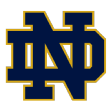
2018 future QB ranking: Not ranked
2017 future offense ranking: 15
Scouting the Fighting Irish: Notre Dame is one of the few teams ranked for offense that didn't make the quarterback future power rankings. The quarterback situation isn't dire, as starter Brandon Wimbush returns and heralded freshman Phil Jurkovec arrives this summer, but Notre Dame needs improvement. There are also short-term uncertainties at wide receiver, offensive line and, to a lesser extent, running back.
Despite losing two projected first-round draft picks up front (guard Quenton Nelson and tackle Mike McGlinchey), Notre Dame's excellent line recruiting should start to pay off, as tackle Liam Eichenberg steps into a bigger role alongside veterans Sam Mustipher and Alex Bars. Fans should get their wish as Dexter Williams, who averaged 9.2 yards per carry in limited work last season, takes on a bigger role in what an opposing defensive coordinator called "a high yards-per-carry operation."
The Irish need stars and depth at receiver, where junior Miles Boykin could build off his bowl game heroics alongside Chase Claypool, Michael Young, incoming freshman Kevin Austin (an ESPN 300 recruit) and others. Tight end should be a major strength with seniors Alize Mack and Nic Weishar alongside three ESPN 300 recruits from the past two classes.
23. UCLA Bruins
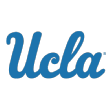
2018 future QB ranking: 20
2017 future offense ranking: Not ranked
Scouting the Bruins: Chip Kelly won't immediately enjoy the schematic and personnel advantages he had during a dominant run at Oregon. But it shouldn't take long for Kelly to get UCLA's offense on track. He needs an answer at quarterback but has options in sophomore Devon Modster, who played well down the stretch last year, sophomore Matt Lynch, freshman Austin Burton, Washington graduate transfer KJ Carta-Samuels and, the most intriguing of all, incoming freshman Dorian Thompson-Robinson, ESPN's No. 2 dual-threat quarterback and No. 34 overall player in the 2018 class.
Receiver is an immediate need, as UCLA returns only three players who caught a pass last year, led by Theo Howard (56 receptions). Young receivers such as incoming freshman Kyle Phillips, an ESPN 300 selection, and sophomore Dymond Lee should get a look. Tight end, meanwhile, should be a strength with junior Caleb Wilson back following a 490-yard season. "He's going to be pretty damn good," a Pac-12 coach said. "He had about 150 yards against [Texas] A&M. They couldn't cover the guy."
The big concerns are offensive line, which returns only two starters, and running back after UCLA finished 115th nationally in rushing in 2017. Kelly must get production from inherited backs Soso Jamabo and Bolu Olorunfunmi this fall before he brings in his own recruits.
24. Texas A&M Aggies
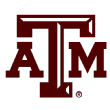
2018 future QB ranking: 25
2017 future offense ranking: 17
Scouting the Aggies: Jimbo Fisher has a lot of work ahead of him, not just in improving areas of the offense but integrating a new scheme. But Fisher is a proven playcaller, quarterback developer and recruiter who inherits some talent and will be bringing in plenty more. He'll work with two quarterbacks (Nick Starkel and Kellen Mond) who played as freshmen last fall, and he landed ESPN 300 prospect James Foster on his first signing day for Texas A&M. Any combination of the three would carry the Aggies through 2020.
Fisher also gets running back Trayveon Williams (1,855 career yards) for at least another season, maybe two, although building depth behind him will be critical. It's critical for Texas A&M's offensive line to regain the form shown early in Sumlin's tenure. All five starters return from a so-so group in 2017, and Fisher signed two ESPN 300 linemen in his first class. The Aggies will miss star receiver/returner Christian Kirk and will need others to step up around returning starter Jhamon Ausbon. Sophomore Camron Buckley is an intriguing player, and Texas A&M has signed four ESPN 300 wideouts in the past two years, plus Jace Sternberger, ESPN's top-rated junior college tight end in the 2018 class.

2018 future QB ranking: 21
2017 future offense ranking: 9
Scouting the Wolverines: The bullying, pro-style offense Michigan fans expected to see from coach Jim Harbaugh simply hasn't materialized. "Michigan has more talent than what's shown up on game day," a Big Ten coach said. Still, there's enough talent to cause a production spike in Year 4. If quarterback Shea Patterson is eligible to play this fall, he gives Michigan a natural playmaker it has lacked at the position. Tarik Black returns from injury to join Donovan Peoples-Jones and form a potentially dynamic tandem of receivers, both with multiple years of eligibility remaining.
Karan Higdon also is back for his final season after rushing for 994 yards in 2017, and Chris Evans and Kareem Walker are only juniors. Tight end should be a strength for Michigan through 2020 with Zach Gentry and Sean McKeon both returning, along with incoming recruit Mustapha Muhammad, ESPN's No. 42 overall player in the 2018 class.
Next to quarterback development, Michigan's biggest priority is an underachieving offensive line. New line coach Ed Warinner will be working with several players who have experience and multiple years of eligibility left -- Ben Bredeson, Cesar Ruiz and Michael Onwenu, to name three. Grant Newsome's return could be huge for the group.
